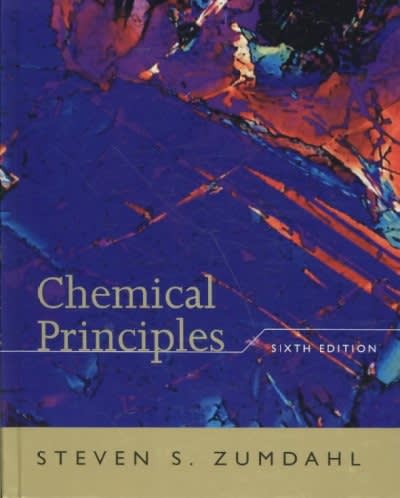The saturated calomel electrode, abbreviated SCE, is often used as a reference electrode in making electrochemical measurements.
Question:
The saturated calomel electrode, abbreviated SCE, is often used as a reference electrode in making electrochemical measurements. The SCE is composed of mercury in contact with a saturated solution of calomel \(\left(\mathrm{Hg}_{2} \mathrm{Cl}_{2}ight)\). The electrolyte solution is saturated \(\mathrm{KCl} . \mathscr{E}_{\mathrm{SCE}}\) is \(+0.242 \mathrm{~V}\) relative to the standard hydrogen electrode. Calculate the potential for each of the following galvanic cells containing a saturated calomel electrode and the given half-cell components as standard conditions. In each case indicate whether the SCE is the cathode or the anode. Standard reduction potentials are found in Table 11.1.
a. \(\mathrm{Cu}^{2+}+2 \mathrm{e}^{-} \longrightarrow \mathrm{Cu}\)
b. \(\mathrm{Fe}^{3+}+\mathrm{e}^{-} \longrightarrow \mathrm{Fe}^{2+}\)
c. \(\mathrm{AgCl}+\mathrm{e}^{-} \longrightarrow \mathrm{Ag}+\mathrm{Cl}^{-}\)
d. \(\mathrm{Al}^{3+}+3 \mathrm{e}^{-} \longrightarrow \mathrm{Al}\)
e. \(\mathrm{Ni}^{2+}+2 \mathrm{e}^{-} \longrightarrow \mathrm{Ni}\)
Step by Step Answer:






